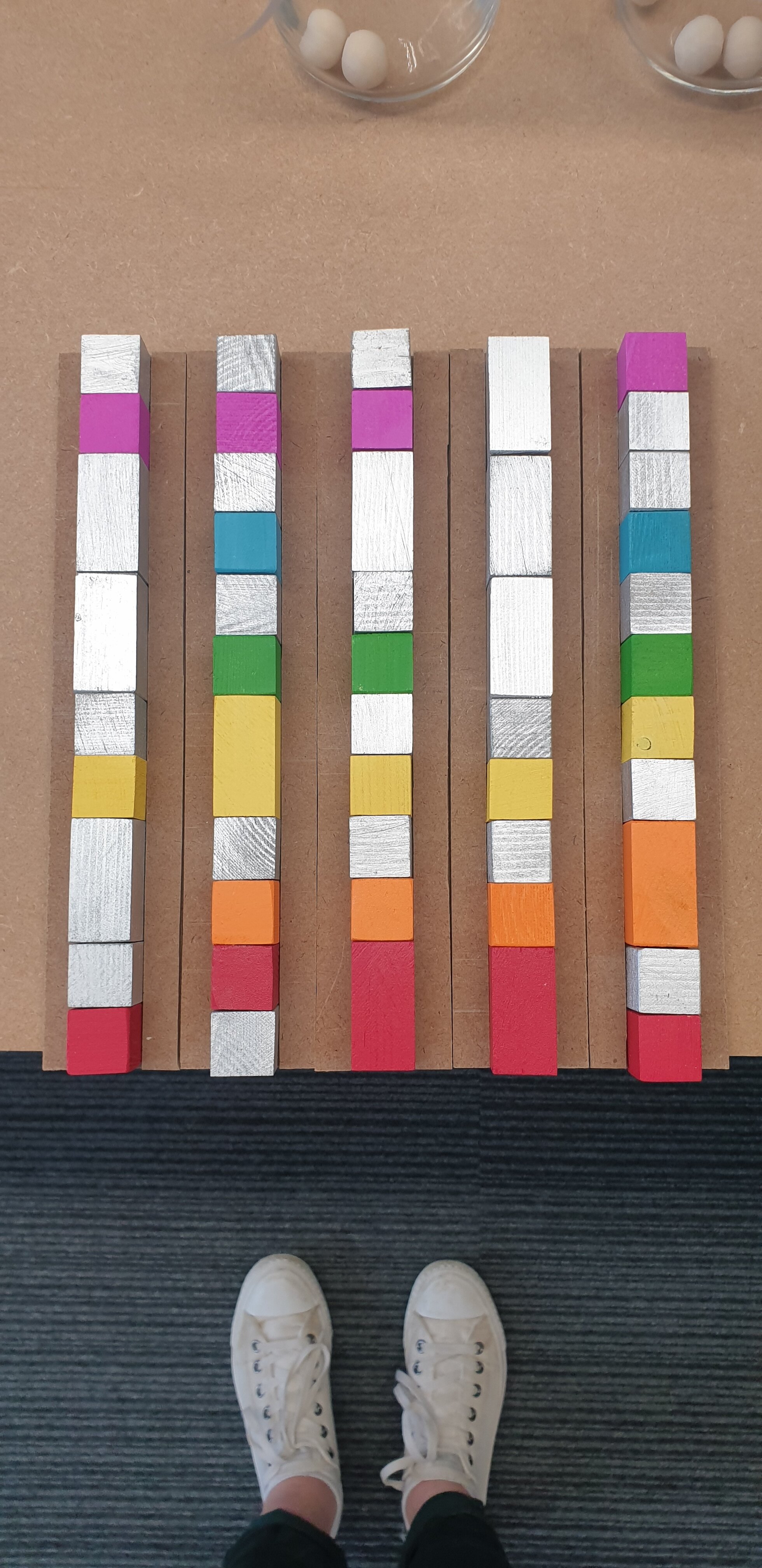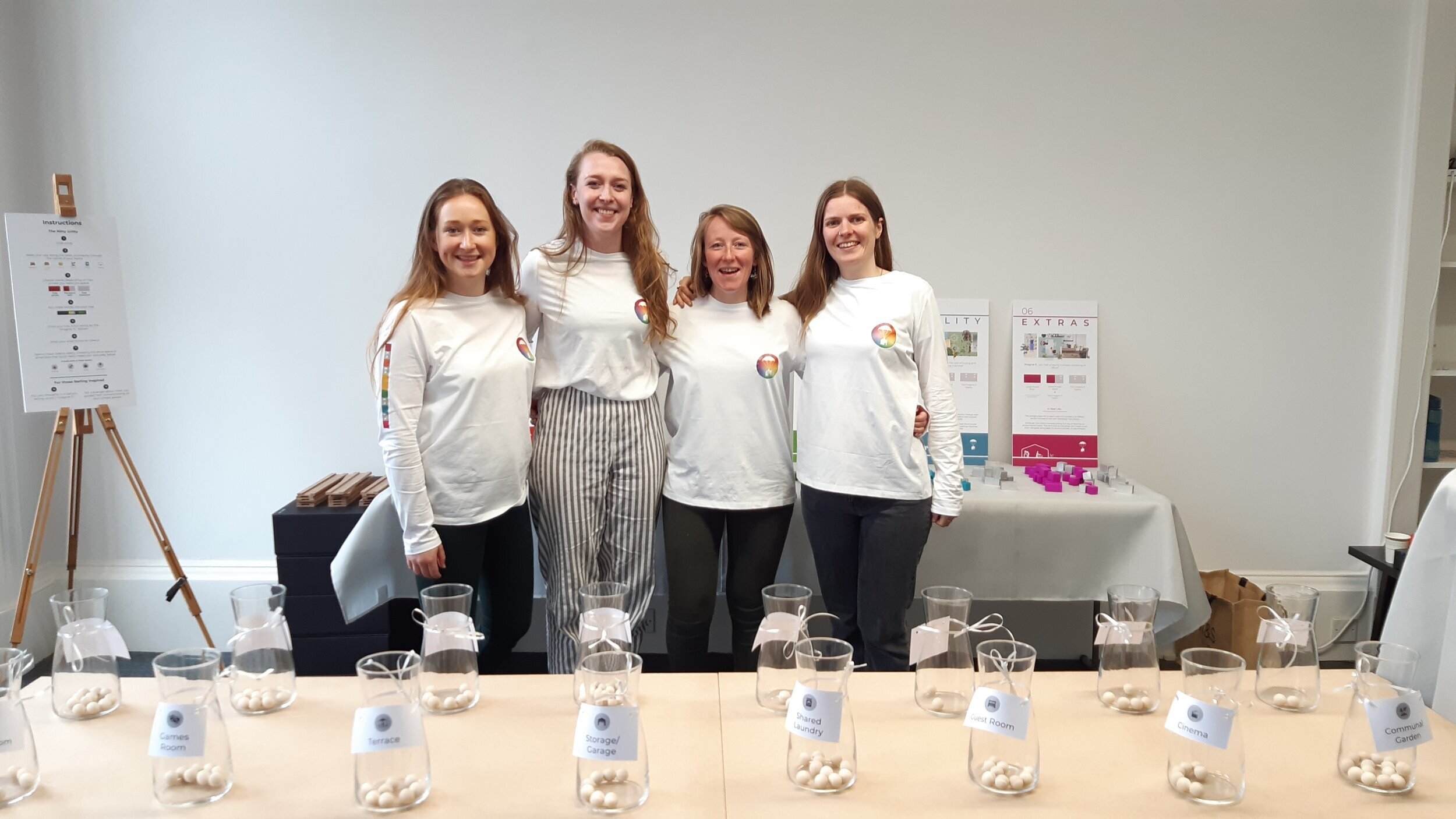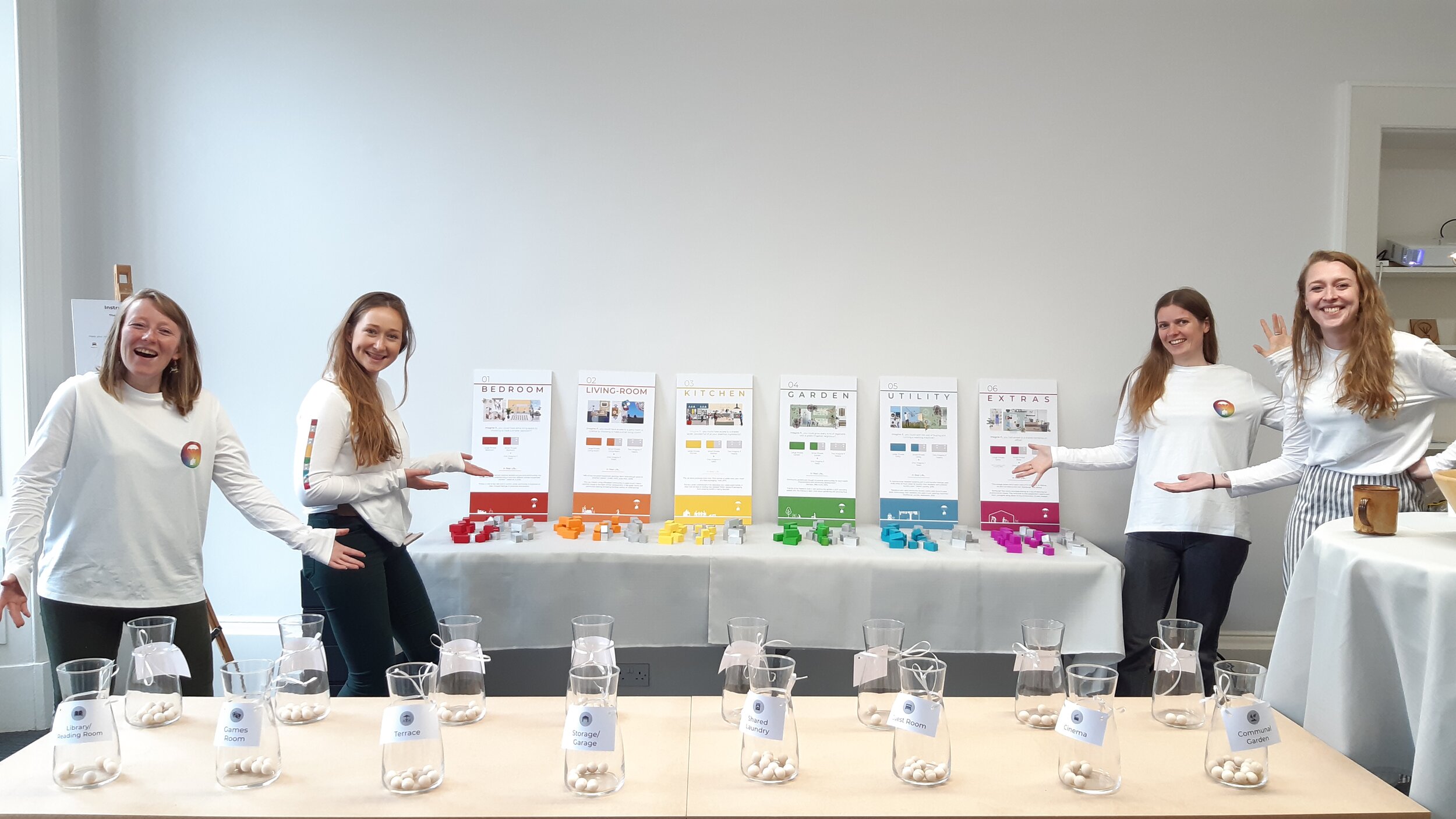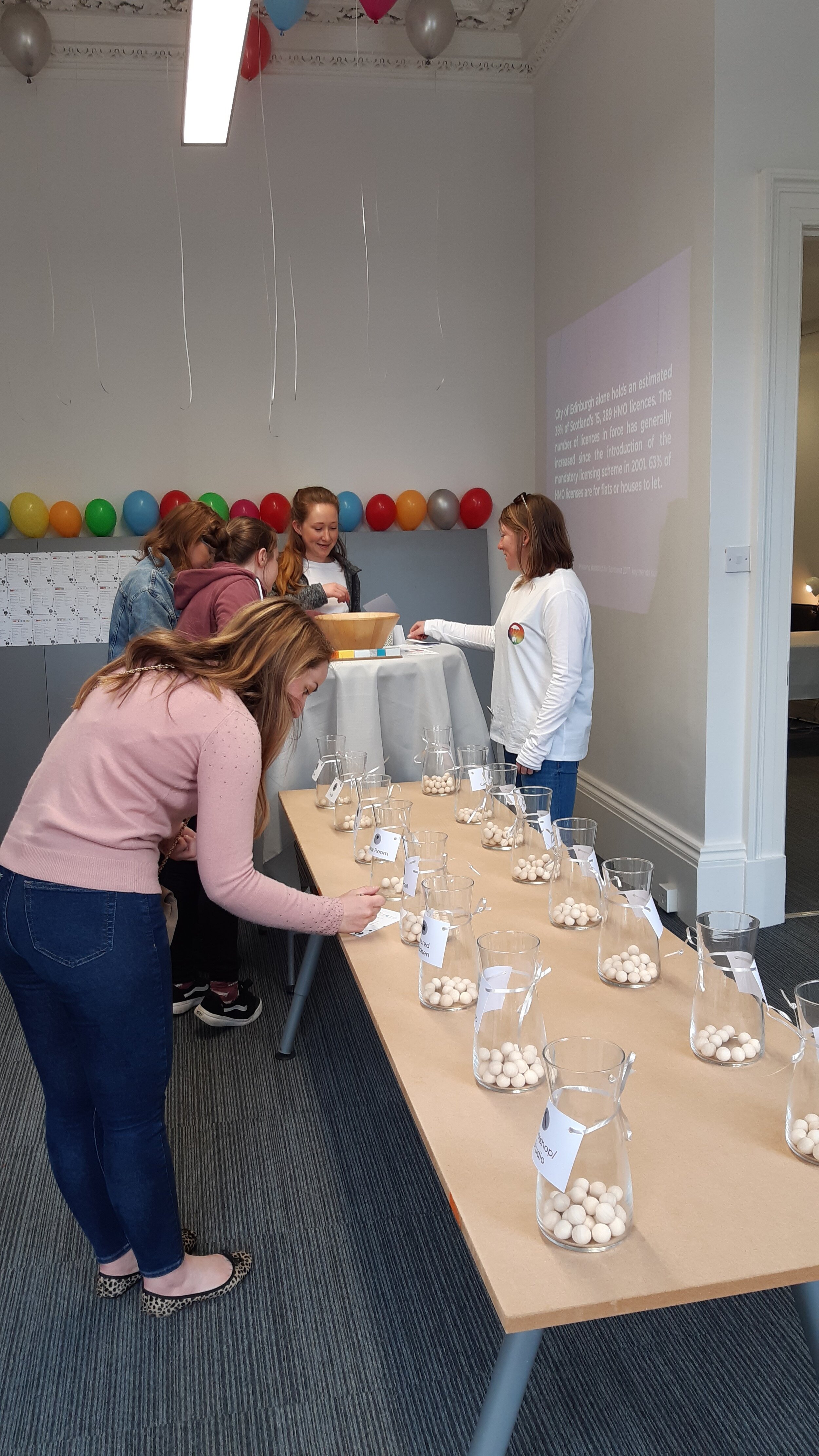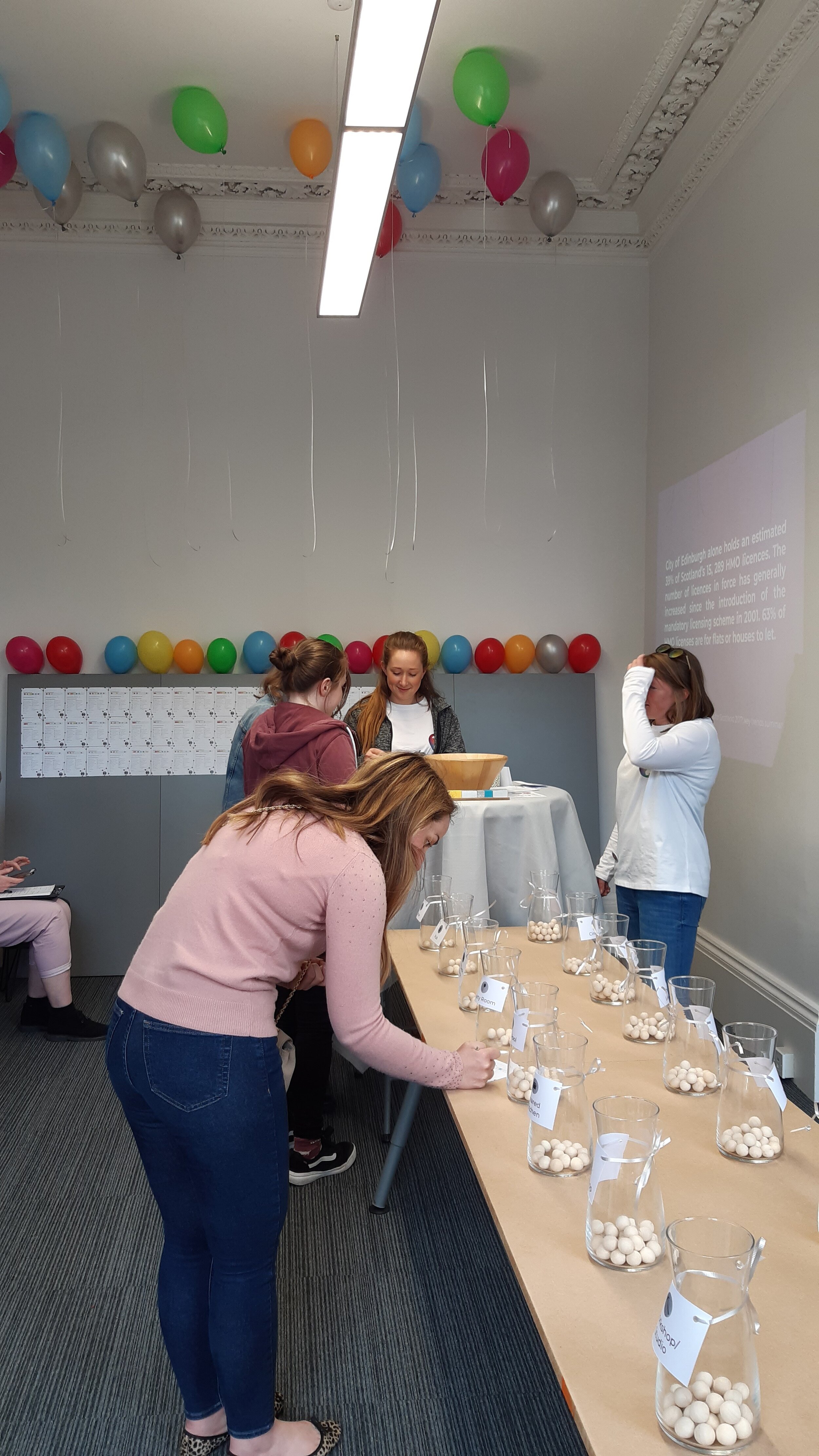Archifringe 2019
in real life
As part of Scotland’s Architecture Fringe, we designed a pop up exhibition. The goal was to start a conversation about alternative ways of living and encourage the public to think differently about their future living situations.
We wanted to put the say back in the end users hands and talk with members of the public one on one.
The exhibition had a series of lighthearted activities, including a quiz and a game that challenged people to think about their current living situations and what they might change.
Both of these activities gave us the opportunity to break down stereotypes of shared accommodation and highlight the advantages of sharing resources.
We broke the ice by inviting people to take part in a quiz, asking them questions about their current living situation such as; do you own your home? and how well do you know your neighbours?. The quiz helped to identify what types of housing people might be compatible with whether that is private. communal or something in between.
Following the quiz, visitors then participated in a game of compromise, which challenged them to think about spatial priorities within their home.
Each player collected a tray and was then taken through rooms in a typical house. In each room they decided from three options fully private; the best of both; or fully communal.
If they were willing to compromise they received imagine if tokens in return which could be traded in for communal resources.
The more people are willing to compromise,
the more tokens they get,
and the more communal benefits they can have access to,
such as a shared laundry, workshop, cinema room…
We set out a range of communal facilities that players could spend their tokens on. Players recorded their choices of communal facilities on a receipt.
Around 100 visitors from 6 to over 80 years old attended, with most people spending half an hour at the exhibition.
Many people were keen to discuss their housing experiences and hopes for future housing.
For example there were conversations about the challenges of renting today, the barriers to getting on the property ladder, and the value of sharing in communities.
From the quiz, the main outcome was that the majority of people were suited to a hybrid style of living with elements of independent and communal living.
There were many interesting outcomes from the quiz, for example, the majority of participants would like to know their neighbours better.
These charts show how much people were willing to compromise on their private space per room.
More than half of the participants were willing to fully compromise on the privacy of the Garden & Utility spaces.
Whereas only 9% compromised fully on the Kitchen as a result of many having negative past experiences or preconceptions of sharing kitchens.
An ‘Extra’ room was an option and unique to each person in terms of what use this space had e.g. a dining room/spare room or study.
The middle chart shows the number of imagine if tokens gained per participant.
The more tokens people chose, the more space they were willing to share with other people.
As you can see, some people really valued their private space, whilst others were willing to share everything, however most people are somewhere in the middle.
The results from the game suggest that there is a demand for a hybrid housing solution with the majority willing to share resources but still wanting to retain a degree of privacy.
Many people were surprised at their results, commenting that it had made them think differently about housing. They were happy to compromise areas of their private living environment, with the knowledge that they could gain access to communal facilities instead.
People chose to compromise their private space 57% of the time.
The gym & communal garden were the most popular communal choices, with the larder and workshop following closely behind.
These spaces all have practical functions and are viewed as an extended part of the home. If these spaces were shared in real life they could offer enhanced social, economic and environmental benefits as part of a housing development.
The less popular choices are more experience driven, for example a communal pub, which arguably can be catered for away from the home environment and less routine to daily activity.
It was encouraging to see people who were initially skeptical of the concept of sharing, come around and be excited about the potential benefits it can bring.
Imagine If plans to host more exhibitions like this to reach more people, widen the conversation about future housing and promote the benefits of sharing. Check out our events page to see our planned upcoming events.
This exhibition highlighted that the way we work, live and play is changing. It also highlights that there is a need for a hybrid solution for housing that could be delivered by joined up thinking, as opposed to starting from scratch.
Imagine If are open to collaboration & conversation with people in industry and want to develop relationships with social enterprises that could benefit from what we have found out. Please get in touch with us to join the dots to Imagine a Hybrid solution.














